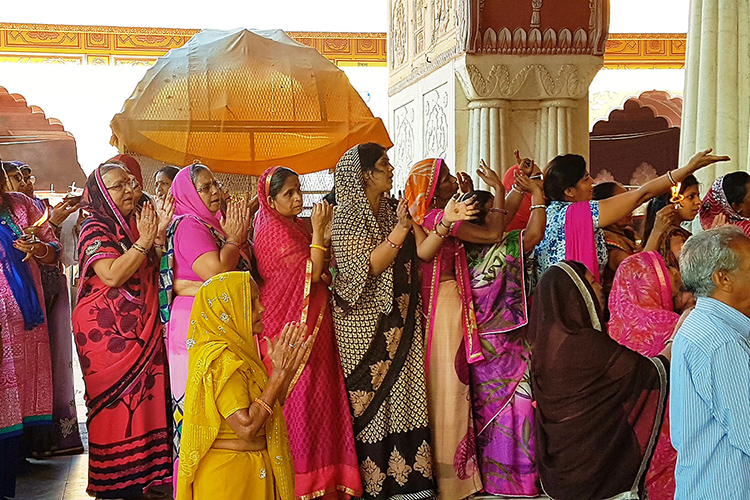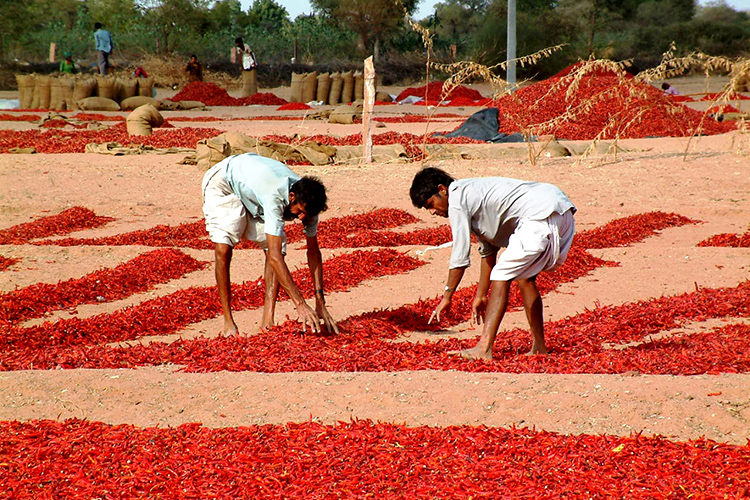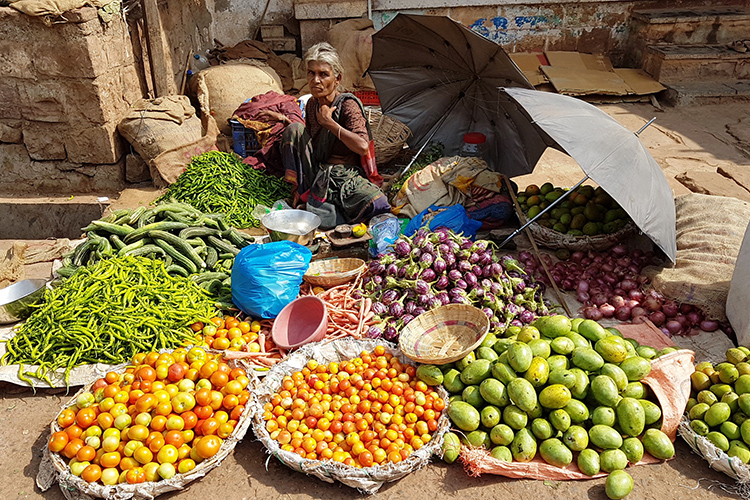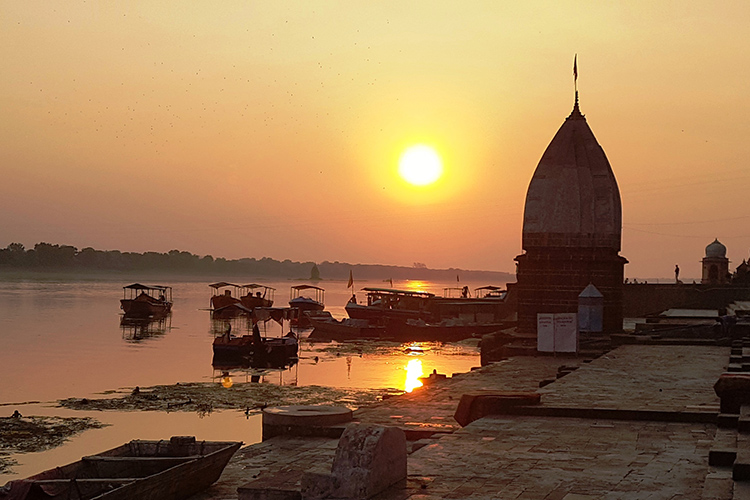Incredible India
India – Mother India – ‘She’ – Hindustan - is a melting pot of history, culture, religion, people, language, cuisine, geography and topography. As such there are few such exciting nor diverse countries on earth and it is a deeply spiritual, enlightening, romantic, beautiful place to visit. Having succumbed over the centuries to occupying foreign powers – the Mughals, Dutch, French, Portuguese and English - and, indeed marauding neighbouring states invading each other, this has given rise to a great mixture of cultures and architecture, and the influences can still be clearly seen today throughout the country. Boasting one of the oldest civilisations in the world, today India is a thriving republic, rapidly growing and developing – in the face of five-thousand-year-old traditions, it is going from strength to strength.
Home to c. 1.4 billion people India ‘hums’ day and night. Despite its vast population there are still many wilderness areas to lose yourself in, along with fabulous, buzzy cities to immerse yourself in. The 7th largest landmass in the world it has 4400 miles of stunning coastline - with the Arabian Sea to its left and the Bay of Bengal to the right - all around its southern two thirds, and the northern areas are bordered by the imposing Himalaya and the countries of Pakistan, China, Tibet, Nepal, Bhutan, Bangladesh and Burma. The outrageously beautiful, craggy peaks of the high Himalaya and the high altitude plateau of Ladakh (aka Little Tibet) give way to the equally breath-taking foothills of Kashmir and the northern states which boast valleys and meadows and rivers that are eye-wateringly lovely. Contrastingly, head west to scorching, desolately beautiful deserts or to the east for glorious, virgin forests; or to the centre for the heart of ‘wildlife’. The south comprises a dividing, arid plateau which drops down to the palm-clad coastal plains and to the dripping, tropical jungles and plantations of the south. The holy Ganges, along with many other huge rivers cut through many parts of the country and provide a vital life source to much of the country.

India is a land of diversity, with a rich tapestry of people that make up its vibrant society. It is home to myriad ethnicities (Indo-Aryan, Dravidian and Mongoloid); languages (it is a linguist’s paradise with Hindi being the national language, English spoken almost through the country, but with c. 1950 other languages or dialects); and religions (80% are Hindu but it has the 3rd largest Muslim population along with Christians, Sikhs, Buddhists, Jains, Jews, Zoroastrians, Baha’is. One of the remarkable aspects of the people of India is their strong sense of community and family values. Family plays a central role in Indian society, and individuals often prioritize the needs and well-being of their loved ones above their own.
Respect for elders and the importance of maintaining strong familial bonds are deeply ingrained in Indian culture. Indian’s also have an admirable passion for education and the children take great pride in going to school, dressed immaculately – punishment for them would be NOT going to school. They are a highly intelligent, driven people who strive for the best in everything. Along with a strong sense of family, they are a deeply spiritual nation – religion comes first for many – and it is known for its celebration of festivals and cultural traditions. From Diwali, the festival of lights, to Holi, the festival of colours, Indians embrace these occasions with great enthusiasm and joy and they provide a coming together / a unity among the people which transcends regional and religious boundaries. While poverty and social inequality remain challenges, the people of India demonstrate incredible resilience and perseverance in the face of adversity. Sadly, many people from rural communities are migrating to the cities but, despite the differences that exist, there is a strong spirit of unity among Indians, evident in times of crisis where communities invariably come together to support and uplift one another.
Travelling in India is a gourmet’s treat and Indian cuisine is a culinary treasure trove that delights the taste buds with its rich flavours, aromatic spices, and diverse range of dishes. It is renowned worldwide for its complexity, depth, and regional variations. A melee of dishes proliferates throughout India’s different states with traditional recipes being passed down over the centuries within India but also with influences from abroad. Vegetarians and vegans have an abundance of choice in India - perhaps more so than anywhere else on earth - as there is a significant vegetarian population.

Some states tend to be more meat based with drier / tandoori food. Others have rich, tasty sauces which are more spice / tomato / coconut based. Bread and rice are staples throughout the country and the choice of scrumptious rotis is endless! The differing regions tend to have their own signature dishes and culinary techniques with the coastal regions known for their seafood delicacies, while the northern regions excel in rich and creamy curries. South Indian cuisine is famous for its spicy and tangy flavours, and the eastern states offer unique sweets and desserts like rasgulla and sandesh. From slow-cooked curries to quick stir-fries and elaborate tandoori preparations and thalis, to fragrant biryanis and delectable street food, Indian cuisine is a gastronomic delight that showcases the country's cultural diversity and culinary prowess.
Wherever you roam in India you will be bowled over by the staggering architecture. From colourful, ornate temples in the south and extraordinary terracotta temples in the east; to majestic palaces and mighty forts perched impossibly on rocky outcrops; to ancient Buddhist and Hindu ruins and stupas; to fabulous Mughal monuments and Colonial structures – there is something for everyone and it’s awe-inspiring in its grandeur and history. Much of it is in good condition or being beautifully restored and is joy to behold.
the subcontinent is not a ‘new’ destination and has been luring visitors back time and again for many years. Similarly, tourism is no longer in its infancy and its infrastructure has developed enormously over the last few years. It is not a place, as perceived to be by many, where things invariably go wrong, with poor service and mediocre hotels. Indeed, there is no other country in the world where you will find such glorious palace hotels, small, family run forts, and a people with an inestimable and overall desire to please, whose second nature is friendliness and generosity.

For the first time visitor, the subcontinent is an invasion of the senses with the sights, sounds, smells and tastes being incomparable to anything you have experienced before. The contrasts are immense – noisy cities become silent at night; the heat of the south to the cold of the north; the monochrome of the land to the colour of the people – it’s all intoxicating. The lure of colour and extraordinary light, the exotic dress, the delicious and vast range of food - all different wherever you venture - are what will constantly tempt you back after your initial ‘taste’. However many times you have travelled there, India remains an experience. We aim to heighten this into one never to be forgotten with every visit revealing aspects of the country that you never knew existed and urging you to return and discover more.
It is entirely understandable that so many people are compelled to return to India year on year as it is a country effectively made up of so many countries; its people speaking different languages, practising different religions and being of different height, colour and origin in almost every state. The country’s diversity has so much to occupy the returning or inquisitive traveller that many find themselves being drawn back year after year with a thirst to discover just that little bit more about this colourful and mysterious continent. With its varied topography and different climatic zones, India is very much a destination for all seasons. There is no other country which can boast such a wealth of history and culture; barren deserts and huge, arid plateaux; rolling foothills; one of the most mighty mountain ranges in the world; verdant, tropical jungle; glorious stretches of golden beaches; wildlife sanctuaries and innumerable ancient monuments and historic architecture.
Being like so many countries wrapped in on one, you are able to ‘pick your country’ so to speak, and the joy of India is that you can visit at any time of year and find a comfortable climate. Travel to the jungles, beaches, temple towns, ancient monuments and wildlife reserves in Winter; travel to the glorious hill stations during Spring and Autumn; and travel to the north and the windswept plains, arid mountain deserts and valleys of Ladakh for a memorable summer holiday (June to August) when much of the rest of India is enjoying its welcome monsoon.
Come to India to experience the most incomparable mosaic of richness of nature, heritage, history, culture, and topography – it is a land that will never disappoint.

